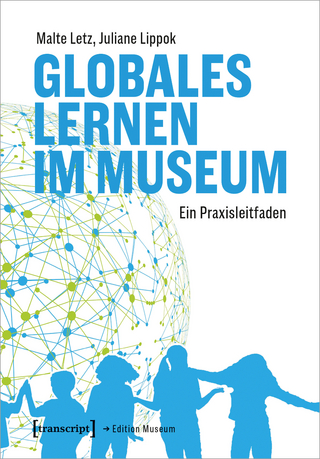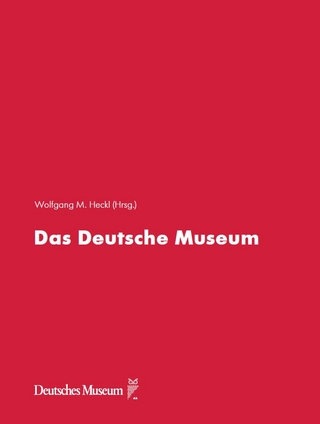
Positioning Your Museum as a Critical Community Asset
Rowman & Littlefield (Verlag)
978-1-4422-7569-0 (ISBN)
Highlights include:
·Thematic discussions on topics such as building an advocacy network between the museum and community; developing cultural heritage institutions as critical and essential components of educational systems; museum response to community expressed needs through a co-creative approach; the varied means for developing community members as cultural heritage stakeholders; and positioning the cultural heritage institution as an integral community asset.
·Twenty case studies directly apply the thematic discussions in small to medium-sized museum contexts.
·Extensive list of resources including digital links to forms, workbooks, and guides produced in the case studies.
·A list of national organizations and an extensive bibliography on community museum engagement.
Specifically addressed to smaller institutions with limited budgets and limited or no full-time staff, the volume includes cost-effective projects that can be completed for $1,500 or less.
Robert Connolly is active in the museum field as an independent consultant and President of the Advocates for the Poverty Point World Heritage Site. He has over 25 years of experience in museums and community engagement most recently as an Associate Professor in the Museum Studies program at the University of Memphis and the Director of the C.H. Nash Museum at Chucalissa. His PhD is from the University of Illinois at Urbana-Champaign in 1996. Elizabeth A. Bollwerk is currently an Archaeological Analyst for the Digital Archaeological Archive of Comparative Slavery (DAACS, www.daacs.org) at the Thomas Jefferson Foundation based at Monticello. She received her PhD from the University of Virginia in 2012.
Introduction- Robert P. Connolly and Elizabeth A. Bollwerk
Part 1 - Communities Making Meaning in Museum Education – Jody Stokes Casey
Case Studies
1.Developing High School Curriculum: The C.H. Nash Museum and Freedom Prep Charter School Project – Nur Abdalla and Lyndsey Pender
2.Creating a Museum in a School: Cultural Heritage in Nivín, Perú– Gustavo Valencia Tello and Elizabeth Cruzado
3.Meeting Teacher Needs: Digital Collections in the Classroom – Shana Crosson
4.Using Postcard Collections as a Primary Resource in the Classroom - Brian Failing
5.Words, Stone, Earth, and Paint: Using Creative Writing to Engage a Community with Its Museum – Mary Anna Evans
Part 2 – The Value of Open(ing) Authority and Participatory Frameworks for Museums – Elizabeth A. Bollwerk
Case Studies
1.Oral History For, About, and By a Local Community: Co-Creation in the Peruvian Highlands – Elizabeth Cruzado and Leodan Alejo Valerio
2.Working with a Private Collector to Strengthen Women’s History: Sewall-Belmont House & Museum – Rebecca Price.
3.Reconnecting a University Museum Collection with Hopi Farmers through an Undergraduate Class– Lisa Young and Susan Sekaquaptewa
4.Our Stories, Our Places: Centering the Community as Narrative Voice in the Reinterpretation of an African American Historic Site - Porchia Moore
Part 3 – Advocacy for Heritage Professionals During the Crisis and the Calm – Sarah E. Miller
Case Studies
1.Making Advocacy Everyone’s Priority – Ember Farber
2.Impact Statements – Demonstrating a Museum’s Public Value – Robert P. Connolly
3.Small Fish, Big Pond: How to Effectively Advocate in Your Community – Melissa Prycer
Part 4 – Museums Engaging With People As A Community Resource – Robert P. Connolly
Case Studies
1.Taking Steps to Make a Museum Special Needs Friendly – Colleen McCartney
2.Incorporating Descendent Community Voices: The Whitney Plantation – Ashley Rogers
3.How Community Input Can Shape a Mission: The Proposed Eggleston Museum – Allison Hennie
4.Building a Community History at the University of the West Indies Museum – Suzanne Francis-Brown
5.Telling Our Town’s History: The Muscatine History and Industry Center – Mary Wildermuth
6.Working to Address Community Needs: The Missouri History Museum – Melanie Adams
Part 5 – Engaging User Audiences in the Digital Landscape – Brigitte Billedeaux and Jennifer Schnabel
Case Studies
1.Creating a Digital Library for Community Access: A. Schwab on Beale Street – Brigitte Billedeaux
2.Separating the Glitz from the Practical in Social Media at the National Underground Railroad Museum – Jamie Glavic and Assia Johnson
3.How a Simple, Inexpensive Podcast Engaged an Entire Community: Chick History, Inc – Rebecca Price
4.Recording the Neglected Sports Stories From the Backside - Holly Solis
5.Small Museum Website Creation with a Limited Staff and Budget: The Arden Craft Shop Museum – Kelsey Ransick
Part 6 – Resources
| Erscheinungsdatum | 28.11.2016 |
|---|---|
| Reihe/Serie | American Association for State and Local History |
| Verlagsort | Lanham, MD |
| Sprache | englisch |
| Maße | 185 x 262 mm |
| Gewicht | 730 g |
| Themenwelt | Kunst / Musik / Theater ► Allgemeines / Lexika |
| Geisteswissenschaften ► Geschichte ► Hilfswissenschaften | |
| Sozialwissenschaften ► Kommunikation / Medien ► Buchhandel / Bibliothekswesen | |
| Wirtschaft ► Betriebswirtschaft / Management ► Unternehmensführung / Management | |
| ISBN-10 | 1-4422-7569-3 / 1442275693 |
| ISBN-13 | 978-1-4422-7569-0 / 9781442275690 |
| Zustand | Neuware |
| Haben Sie eine Frage zum Produkt? |
aus dem Bereich


